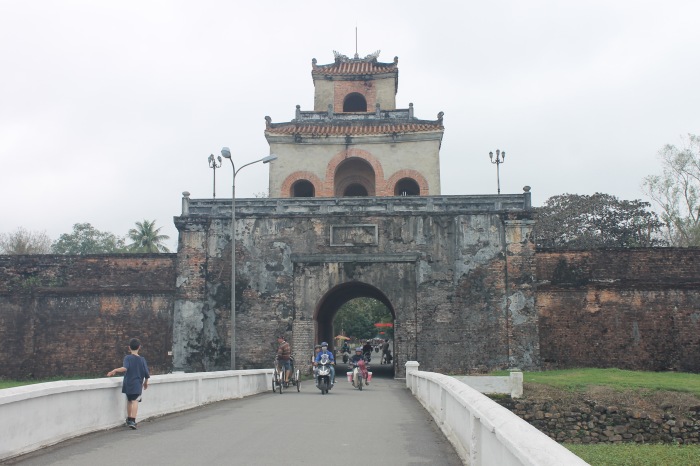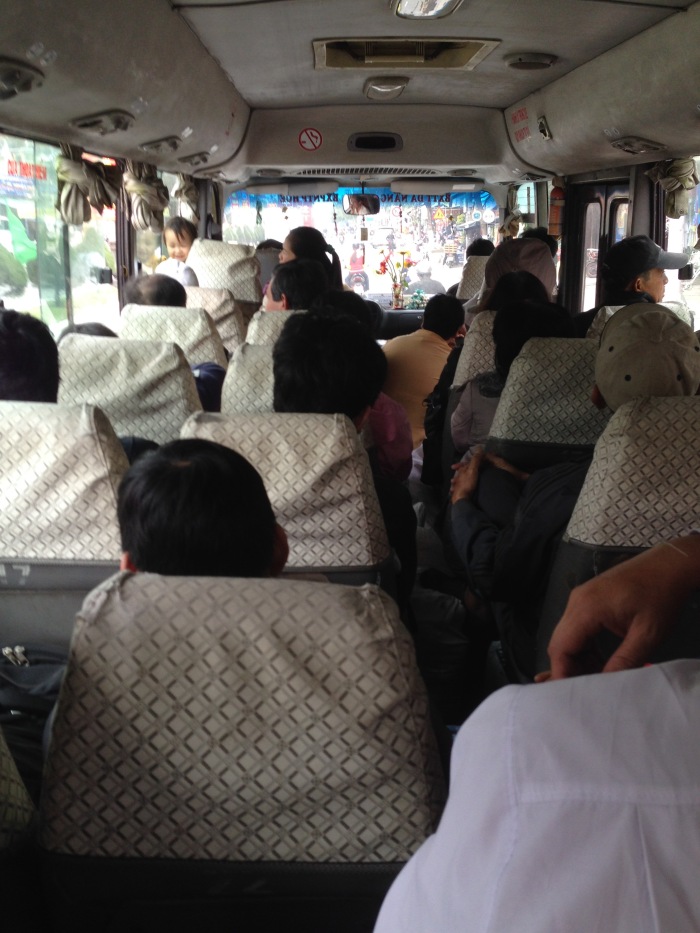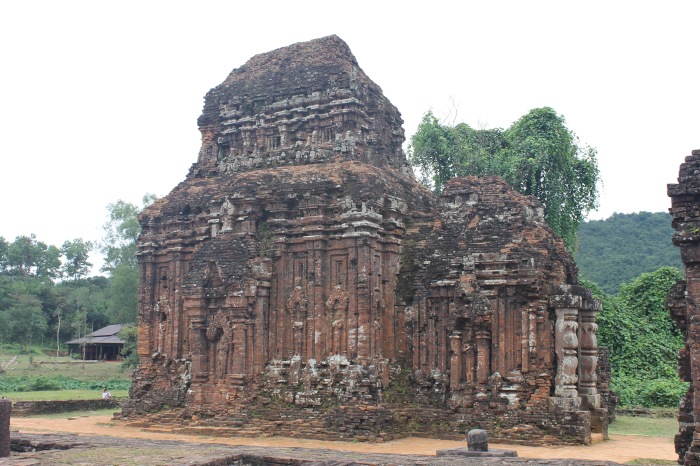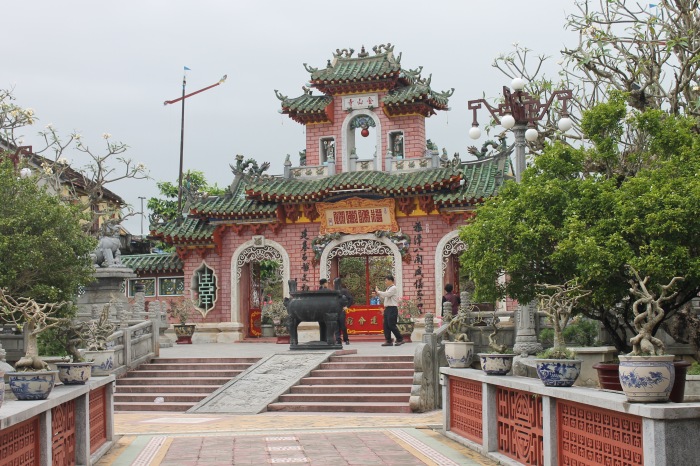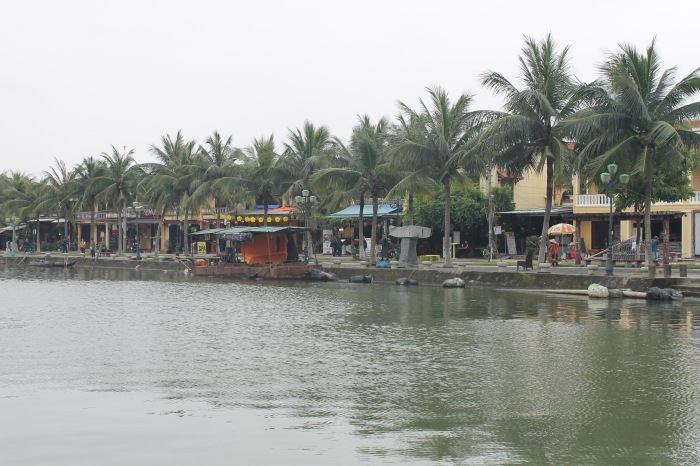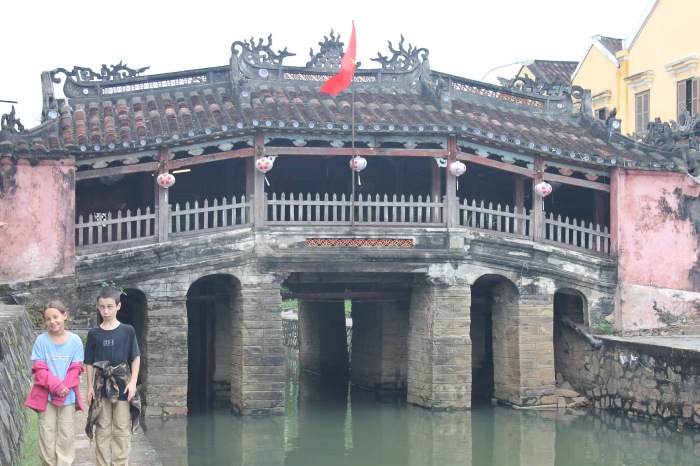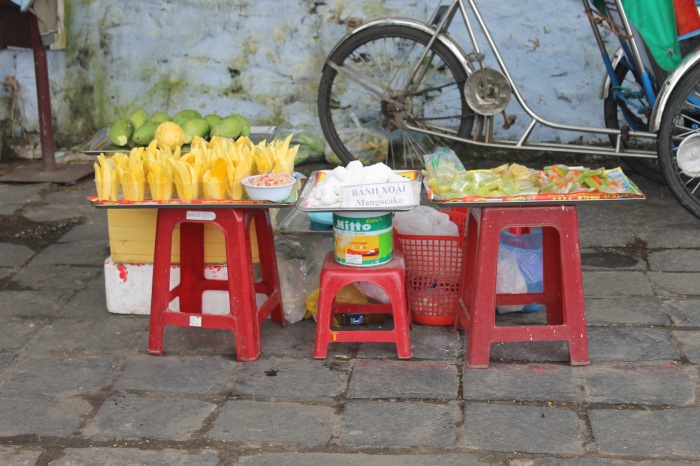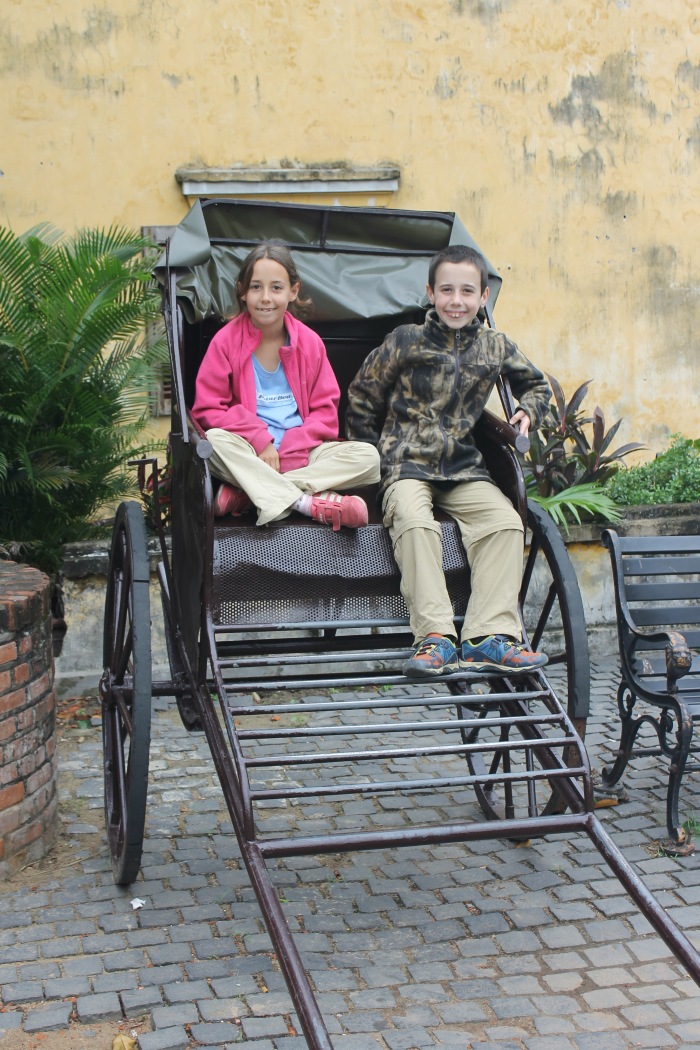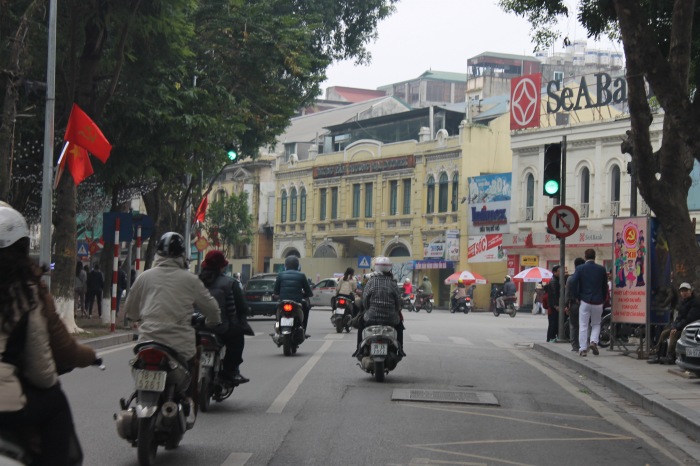We started early, waking up at 6:30 to get to the special bus stop an hour before our bus left to pay for our tickets and not lose our reservations. In the end, the bus wasn’t full so we could have come later. We ate a little breakfast in the waiting room, just some bread and bananas, and I read some Harry Potter until the bus was ready. Our first bus was quite pleasant. They gave each of us a small bottle of water, an apple, and some pastries. I had brought a large water, two breads and fruit, so this added to our supplies. The road to the border was a typical Chinese tollroad, fast and smooth. We stopped once for a bathroom break, and reached the border by 11:30. At the border we switched from the bus to a small electric car that shuttled us to and from the checkpoints.
 While some of the time it was nice to have the ride, other legs were so short that we seemed to spend more time getting on and off the cart than actually driving. At the Chinese border checkpoint, Dylan counted 90 security cameras. Impressive! It was noticeable how more relaxed the Vietnamese officers were. One guy told me just to leave my big bag at the side while I waited in line for Immigration. Since I had the two kids, he then took me to the front of the line, cutting 25 or so others. Nobody complained; I certainly didn’t. After getting our passports stamped, we couldn’t walk straight through because my bag was behind us to the side. No problem. We just walked backwards, picked up the bags and went past the counter on the other side. Relaxed and informal, not what you expect at border crossings. Our electric cart then took us to our Vietnamese bus.
While some of the time it was nice to have the ride, other legs were so short that we seemed to spend more time getting on and off the cart than actually driving. At the Chinese border checkpoint, Dylan counted 90 security cameras. Impressive! It was noticeable how more relaxed the Vietnamese officers were. One guy told me just to leave my big bag at the side while I waited in line for Immigration. Since I had the two kids, he then took me to the front of the line, cutting 25 or so others. Nobody complained; I certainly didn’t. After getting our passports stamped, we couldn’t walk straight through because my bag was behind us to the side. No problem. We just walked backwards, picked up the bags and went past the counter on the other side. Relaxed and informal, not what you expect at border crossings. Our electric cart then took us to our Vietnamese bus.
Vietnam is decades behind China. From a fast tollroad, we transitioned to a single lane road choked with traffic. Between the busses, trucks and oodles of motorcycles and mopeds, the bus rarely broke 30 mph. Close to Hanoi, we stopped for no apparent reason for 15 minutes and then entered the city. Crazy only begins to tell the story. We inched along to the bus station where we were accosted by taxi drivers.
The Vietnam guidebook warns of local scams, including taxis with fast running meters and hotels pushing tours on their clients. So, I was weary of the cab, but decided to get in anyway for the 6 km ride to our hostel.
Two days ago, I had started to book a room online at a hostel, but they wanted my credit card and I changed my mind about how many days to spend in Hanoi. The weather report says that in a few days the high temperatures will fall to the high 40s, so I decided we should flee south first and tour northward. Hopefully, it will be milder when we get back. Since I didn’t want to commit to three nights in Hanoi, I didn’t confirm the reservation. I figured that one day later they would still have space.
As the cab took off, I watched the meter and it was moving fast. I should temper this by saying that Vietnamese money, the Dong, have lots of zeros. One dollar is a little more than 22,000 Dong. So, the fact that the meter ran in 1,000s wasn’t surprising. But after 2 km, it was already at 200 (200,000) or close to $10, way too much. I braced for a big fight at the end of the ride. By the hostel, the fare had gone up to 770,000. I told the kids to get out, and I took out all my bags before talking to the driver. “How much?” I asked. 77,000 was his response, and I relaxed. I found out later that the 770 was really 77.0. I couldn’t see the decimal point. The ride was only $3.50, more than reasonable.
The hostel, though, was less auspicious. They had no rooms. Damn. I asked for a nearby alternative, but they only suggested something twice the price. I told the kids that I had previously found another place that looked good, but we had to walk almost 10 minutes to get there. They also didn’t have a room, but pointed us around the corner to anther place . . . which was also full. They were nice, though. They let me get online, and I found another hostel and made a reservation this time. The kids were not happy, but we had another five minute walk. We got to the hostel, and they were also booked. I told them that I had just made a reservation. “Sorry” was the reply. Now I was annoyed. They let me use their internet to search, and I insisted that they call the places I found to make sure they had a room. I tried a couple, but none had rooms once he called. Then I made another confirmed reservation, and he said they didn’t have rooms either. I began to doubt his English or his trustworthiness. I told the kids that we would walk to this last place. Another 10 minute walk, and we arrived. I announced that we had a reservation. I was answered with a smile.
The Hanoi City View Hostel’s lobby seemed nice enough, and we were hungry and exhausted. They gave me a cup of tea and the kids some fruit, but didn’t show us to our room. Did we want a day trip to Halong Bay? No, but I asked about train tickets to Danang for Saturday. She checked and said she could get us tickets on a sleeper as I wanted. I doublechecked the price online, and hers was better than what I saw. She offered us two nights of rooms, but tonight we had to stay at their “other,” “nicer” hotel and she would pay for the cab there. In the morning, she would bring us back on motorscooters. I then asked about changing money. She offered a good rate, so I gave her $200 which she put in her bag. How about dinner? We ordered a pizza from their menu. Again, she could give us a “special deal.” She was lovely but forceful and always bargaining. She offered us two nights at $25 each, a $35 value. But eventually, we got them for $20 each. Then, I asked her about the $200. Oh, she said in surprise. She looked in her bag, and gave me the Vietnamese dong. Why didn’t she just give it to me right away? Odd. The pizza came, we ate it (not very good), and then we got into the free cab to the other hotel. We got out at a fancy looking place. One guy took my bag, and the kids went into the chandaliered lobby. My first inkling that something was wrong was when the cab driver asked me for the fare. The hotel is paying it – the bellboy just looked at me. All right, I’ll pay. Hmm. I followed the kids in. Do you have a reservation? I explained that the first hotel was paying. I had already paid them. They returned blank stares. Uh, oh. Had I just been duped? I paid her for two nights and the train ticket without any receipts. It looked like she tried to take my $200 without giving me the Dong in return. OK, I thought, preparing to take a cab back and to raise hell. The nice people in front of me were still perplexed. Do you have a receipt? No, but I found the phone number. They called. This number led to another. Voila, mystery solved. The cab left us at the wrong hotel. They walked us a few doors down to where we were expected. Sigh of relief. They gave us a key, and we went up the elevator.
Besides the scam that wasn’t, what are my first impressions of Hanoi? Narrow streets and lots of scooters. Barely organized chaos of traffic. At one intersection, the cars and scooters from all directions just merged and met in the middle. The buildings are all old. There are people selling everywhere. The sidewalks are usually impassable with stores spilling out their doors and scooters parked every which way. Some strange, improbably narrow buildings. I’ll try and get pictures of all these for tomorrow’s post.
 Leading up to the tomb are a series of courtyards covered in blackened concrete.
Leading up to the tomb are a series of courtyards covered in blackened concrete.  including a lineup of supplicants.
including a lineup of supplicants. 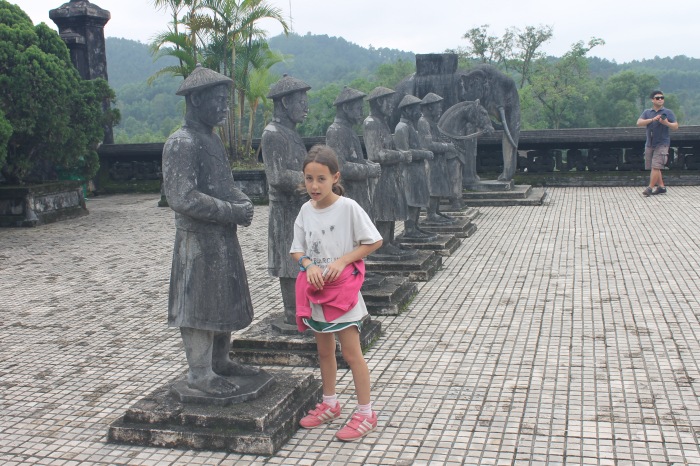 The tomb, pictured at the top of the post, is ornately carved on the outside
The tomb, pictured at the top of the post, is ornately carved on the outside 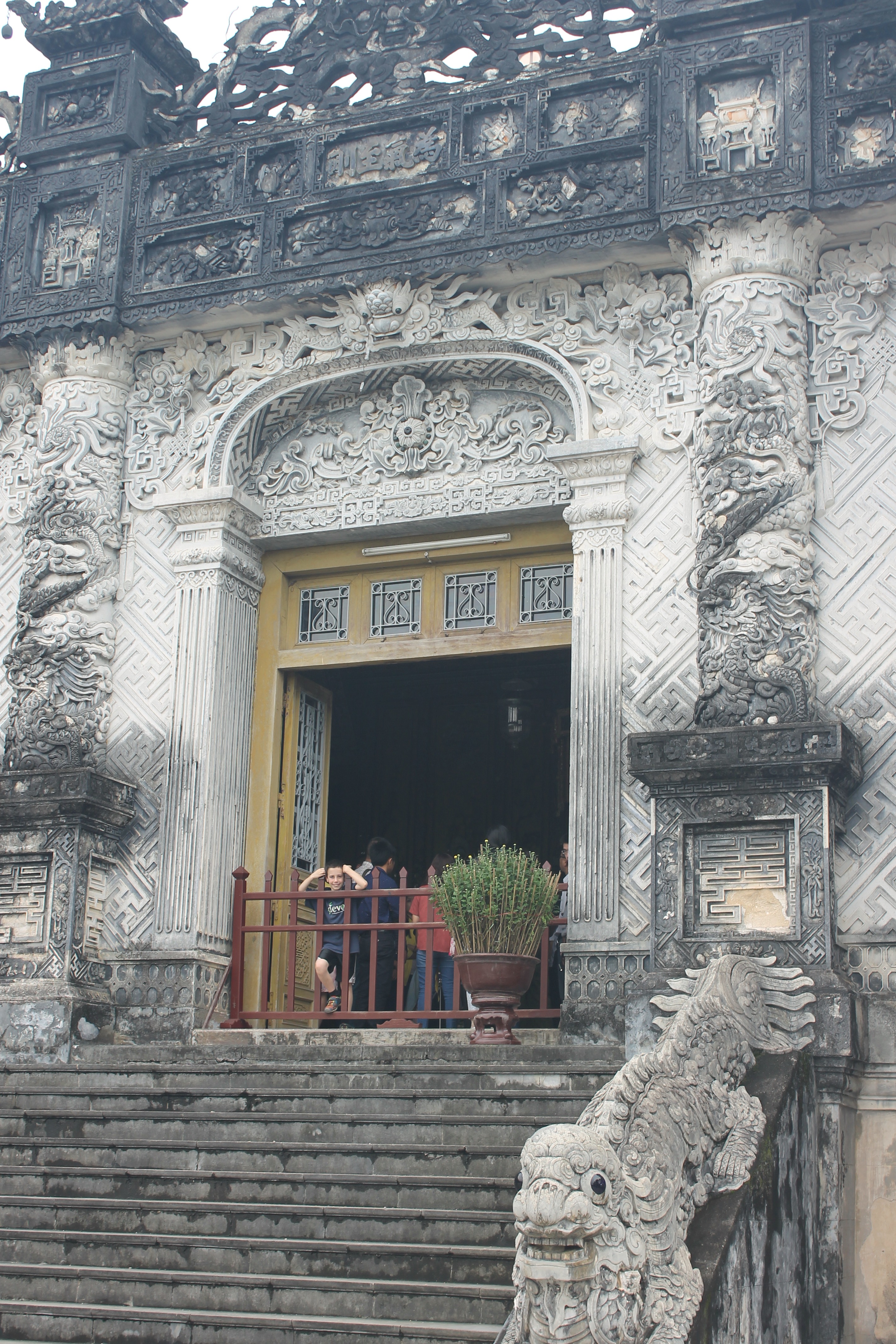 and covered inside with a riot of ceramic tiles in relief.
and covered inside with a riot of ceramic tiles in relief. 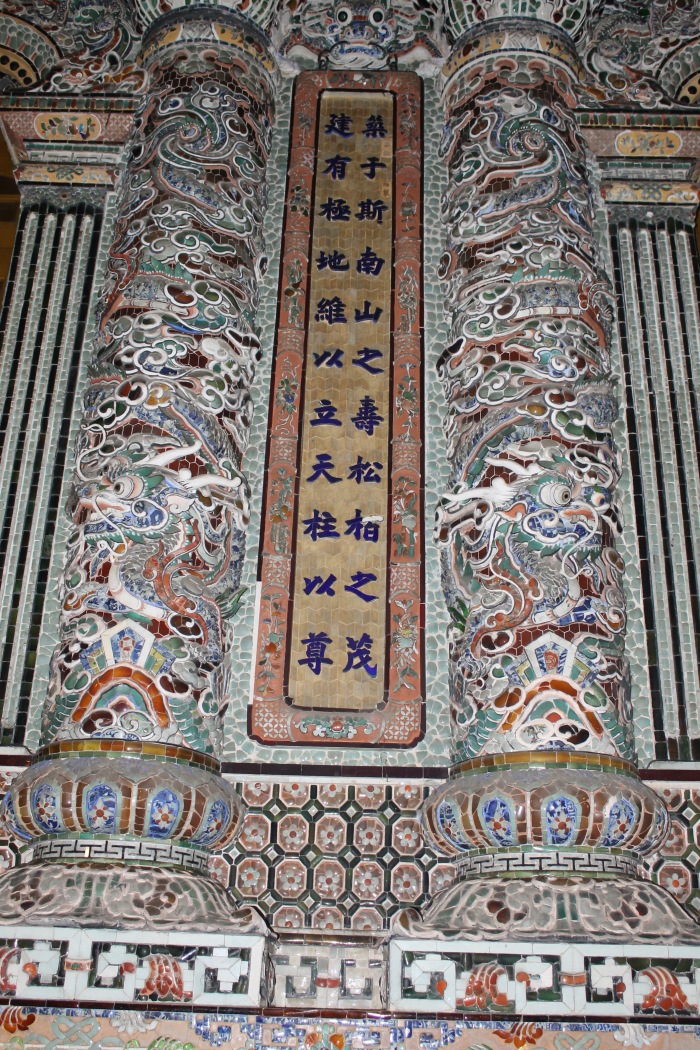 The tomb itself is equally ornate and topped with a gold statue of the king.
The tomb itself is equally ornate and topped with a gold statue of the king.  behind which three levels of courtyards lead to the Sung An Temple, dedicated to Minh Mang and his wife.
behind which three levels of courtyards lead to the Sung An Temple, dedicated to Minh Mang and his wife.  Behind that, three bridges cross the Lake of Impeccable Clarity to the Pavilion of Light.
Behind that, three bridges cross the Lake of Impeccable Clarity to the Pavilion of Light.  Lastly, behind this pavilion are more bridges leading across the Lake of the New Moon to the underground and buried tomb of the emperor.
Lastly, behind this pavilion are more bridges leading across the Lake of the New Moon to the underground and buried tomb of the emperor.  Nearby are several small pavilions, one with a stele from 1715 on the back of a marble turtle
Nearby are several small pavilions, one with a stele from 1715 on the back of a marble turtle  and another with an enormous 4,500 pound bell that can supposedly be heard 10 km away. (Check out the feet!)
and another with an enormous 4,500 pound bell that can supposedly be heard 10 km away. (Check out the feet!)


